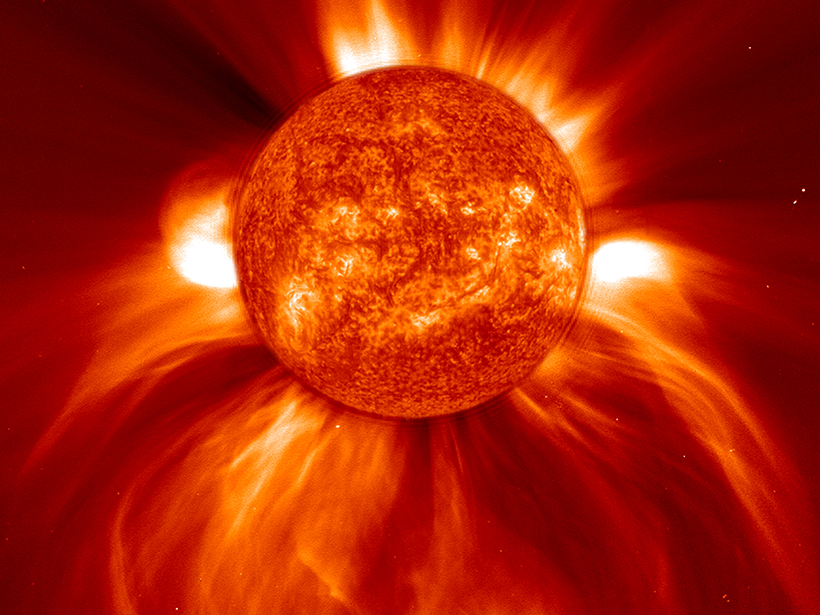Source: Space Weather
The solar winds that buffet Earth’s magnetic field, made up of charged particles that hurtle away from the Sun at hundreds of kilometers per hour, can cause radio blackouts, disrupt power grids, and endanger satellites. Scientists have spent decades developing techniques to predict the powerful magnetic storms, but current methods are still prone to costly errors. Now, a cheaper, quicker technique for modeling how solar winds will impact Earth’s magnetic field could help humans better prepare for space weather.
All existing predictions of solar wind–driven space weather begin with photographs of the Sun. As Earth travels around the star, scientists capture a series of images that reveal hot spots where the star’s magnetic field is most active and the shape of its glowing corona, the halo of hot gases that produces solar winds. They use those data to calculate the speed and density of solar winds and produce an approximate space weather forecast.
Existing models of how solar winds propagate from the Sun to Earth grow more uncertain as they approach Earth, a costly source of error when decision-makers must decide whether to change the trajectory of a plane or satellite or make other preparations for a magnetic storm. One source of uncertainty is the slower, denser winds that travel near the Sun, which are more difficult to model than the faster winds at the top of the Sun’s corona. In the new study, Owens and Riley sampled these near-Sun solar wind conditions at a range of positions, then developed a new computational model of how they affect near-Earth space weather.
The model is significantly simpler and less demanding than existing methods, allowing forecasters to run multiple models at once and then compare their results. In addition to producing more accurate forecasts, the technique should help reduce false alarms for humans charged with protecting vital communication and navigation systems such as radio and GPS. (Space Weather, https://doi.org/10.1002/2017SW001679, 2017)
—Emily Underwood, Freelance Writer
Citation:
Underwood, E. (2017), A better way to predict space storms, Eos, 98, https://doi.org/10.1029/2017EO088713. Published on 13 December 2017.
Text © 2017. The authors. CC BY-NC-ND 3.0
Except where otherwise noted, images are subject to copyright. Any reuse without express permission from the copyright owner is prohibited.

